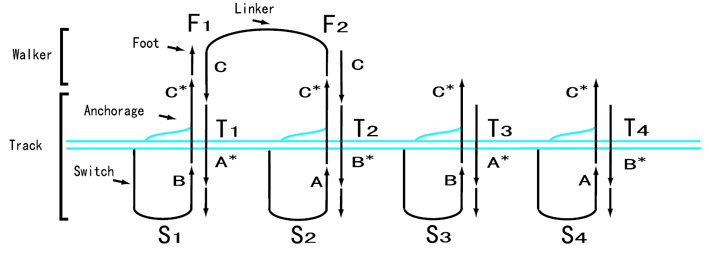
Peng Yin, Andrew Turberfield, & John Reif
In Proc. Tenth International Meeting on DNA Computing, 2004, to appear
Downloads: PDF
Abstract: Imagine a host of nanoscale DNA robots move
autonomously over a microscale DNA nanostructure, each following a programmable
route and serving as a nanoparticle and/or an information carrier. The accomplishment
of this goal has many applications in nanorobotics, nano-fabrication, nano-electronics,
nano-diagnostics/therapeutics, and nano-computing. Recent success in constructing
large scale DNA nanostructures in a programmable way provides the structural
basis to meet the above challenge. The missing link is a DNA walker that can
autonomously move along a route programmably embedded in the underlying nanostructure
-- existing synthetic DNA mechanical devices only exhibit localized non-extensible
motions such as bi-directional rotation, open/close, and contraction/extension,
mediated by external environmental changes. We describe
in this paper two designs of autonomous DNA walking devices in which a walker
moves along a linear track unidirectionally. The track of each device consists
of a periodic linear array of anchorage sites. A walker sequentially steps
over the anchorages in an autonomous unidirectional way. Each walking device
makes use of alternating actions of restriction enzymes and ligase to achieve
unidirectional translational motion.

Back to pulications